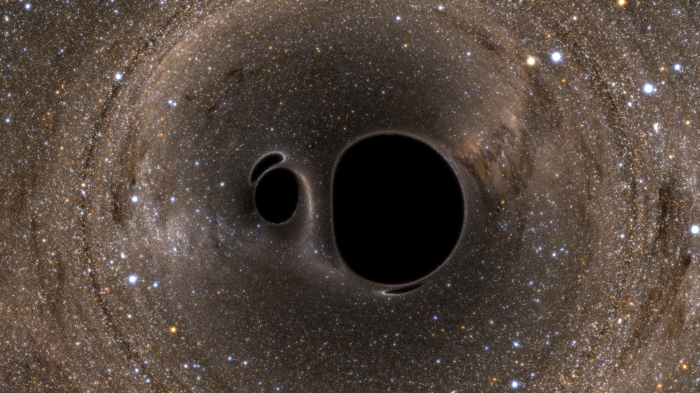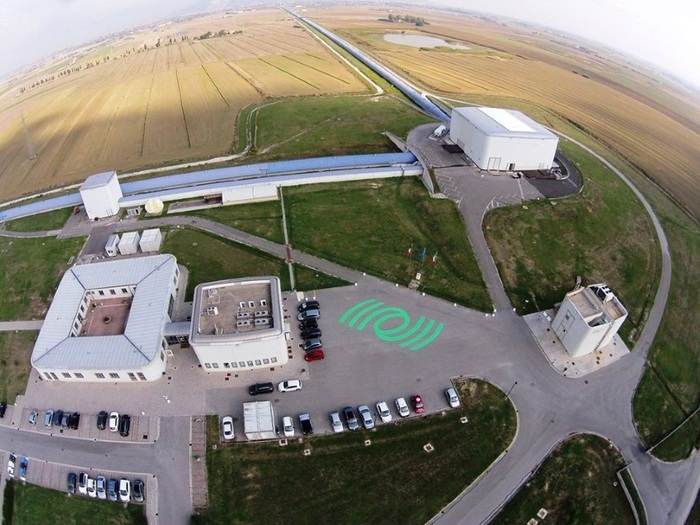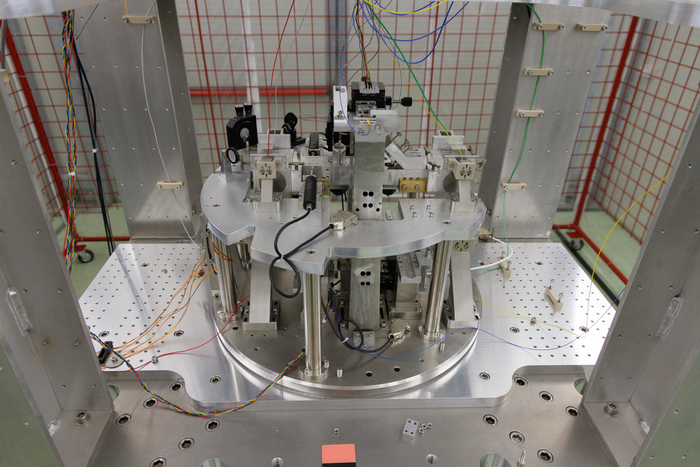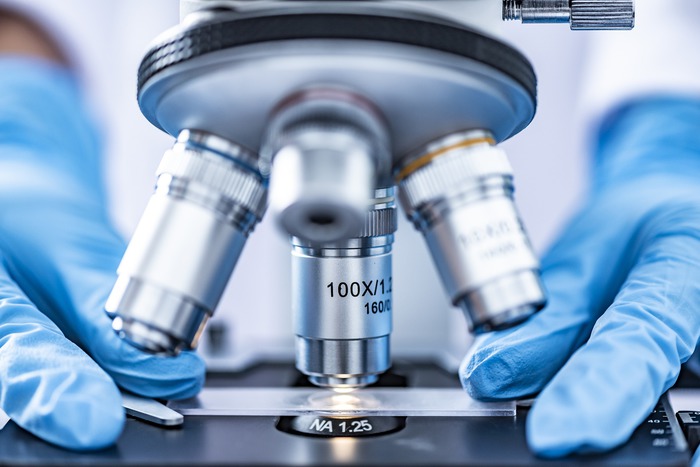The gravitational waves generated by the collision between the black holes could propagate in a much less linear way than that predicted in current models, but more chaotic to the point of recalling the behavior of ocean waves.
This is what a new theoretical model predicts, which allows for a better understanding of what really happens when cosmic collisions occur and which once again puts Einstein's theory of relativity to the test.
The study, published in the journal Physical Review Letters and the result of research coordinated by the US Columbia University, is the first step in preparing for the resumption of observations - scheduled for March this year - with the gravitational wave detectors, which have been stopped for the last two years for updates.
Computer simulation of two black holes about to collide (source: SXS Lensing/Simulating eXtreme Spacetimes Collaboration)
Since 2015, the year in which they were first detected, gravitational waves have allowed the observation of about a hundred collisions between black holes.
Until now, the models of the gravitational waves emitted after the merger of two objects of this type have included only linear interactions, which have so far been sufficient to provide information on the structure and content of these mysterious objects.
However, the contribution given by non-linear interactions, which would allow a considerable advance in knowledge, is missing.
To understand its importance, the study authors described waves in an ocean: A wave that rises and falls without splashing water could be described with a linear equation, but a wave that splashes and crashes exhibits nonlinear interactions. and, ignoring them,
Now, the researchers have managed to include a portion of these particular interactions between waves in the model, leading to an accuracy of more than 10%.
“This is a big step to prepare us for the next phase of gravitational wave detection,” comments Macarena Lagos, co-author of the study, “which will deepen our understanding of gravity and these incredible phenomena.”






